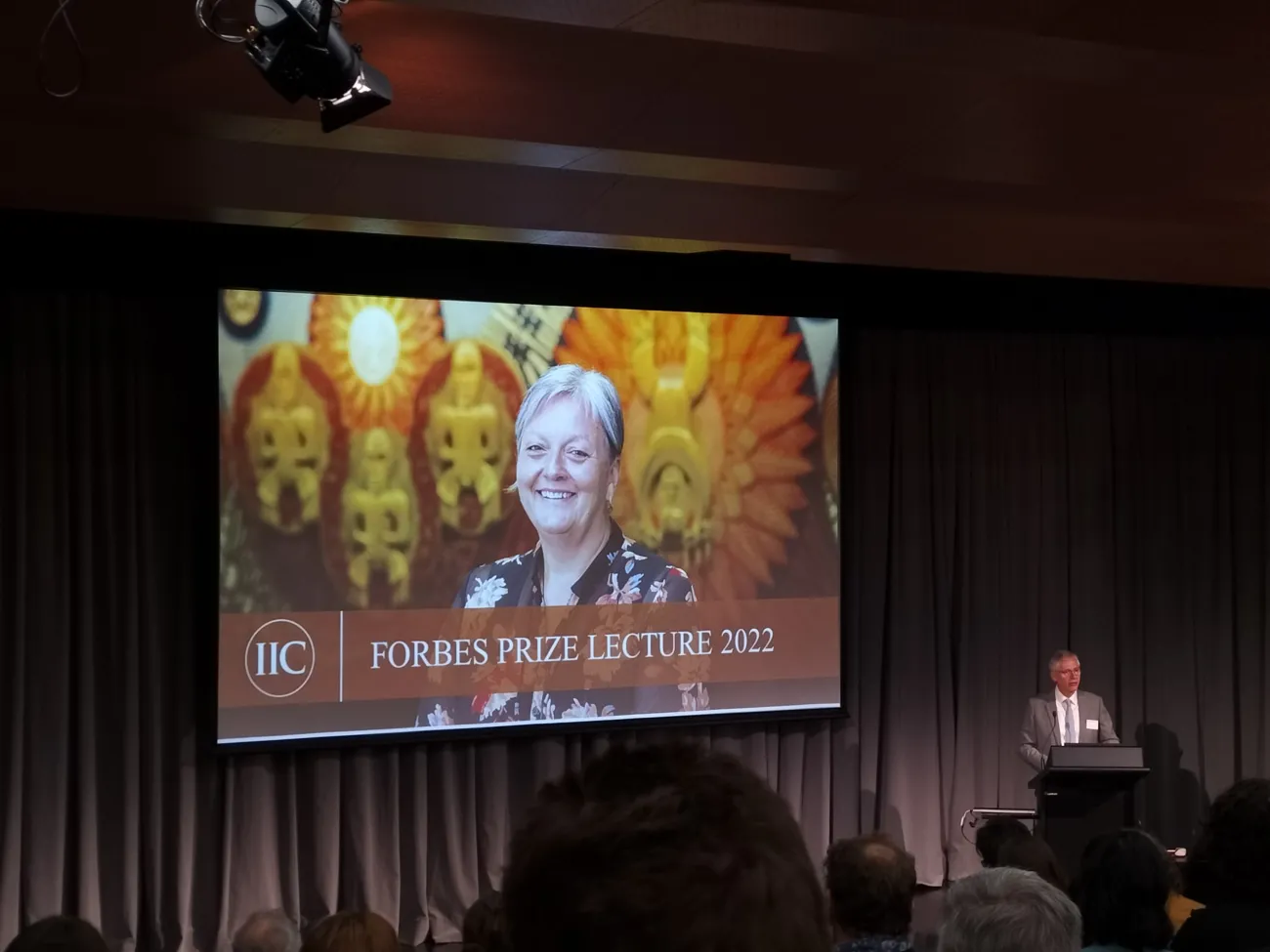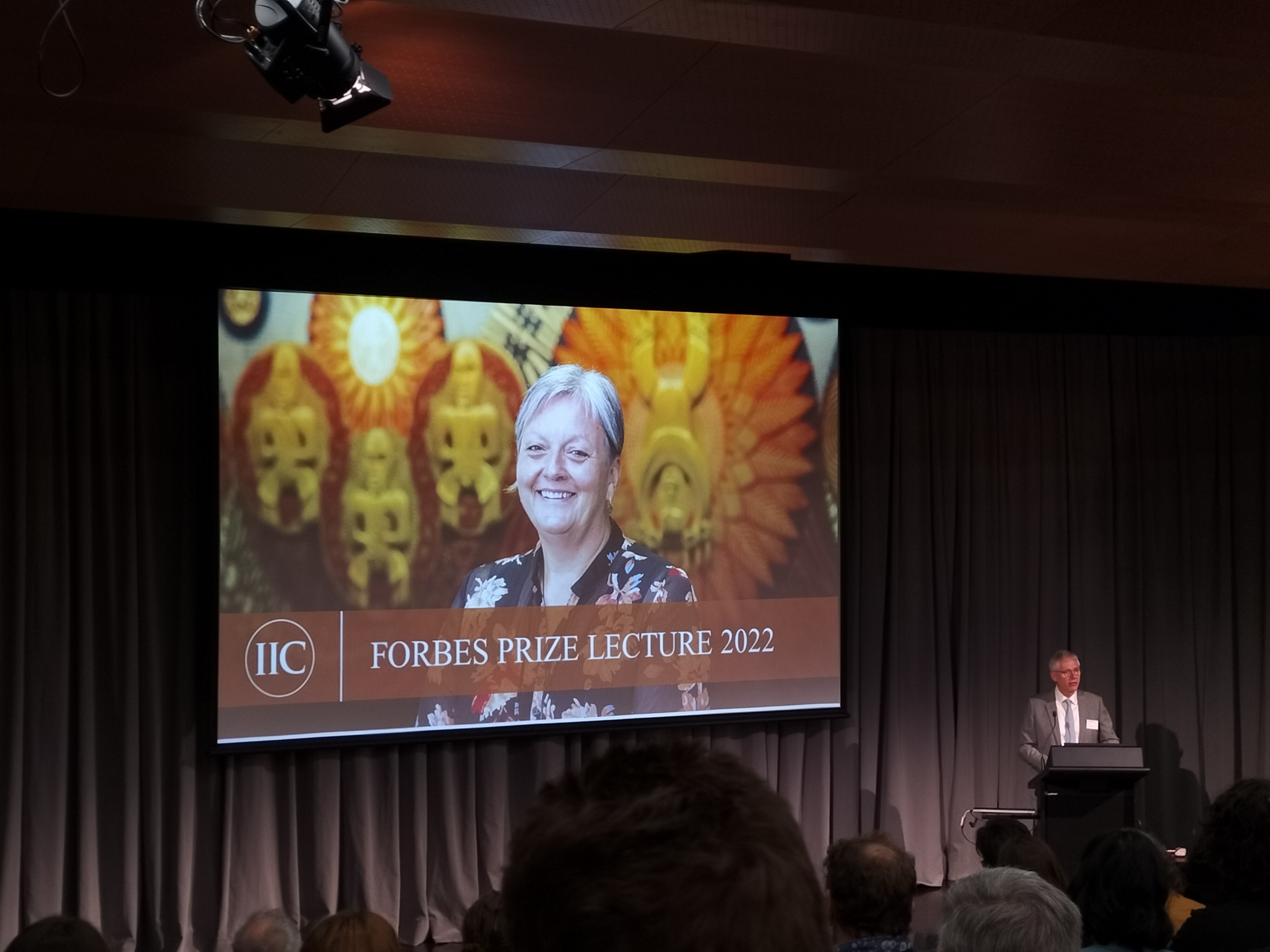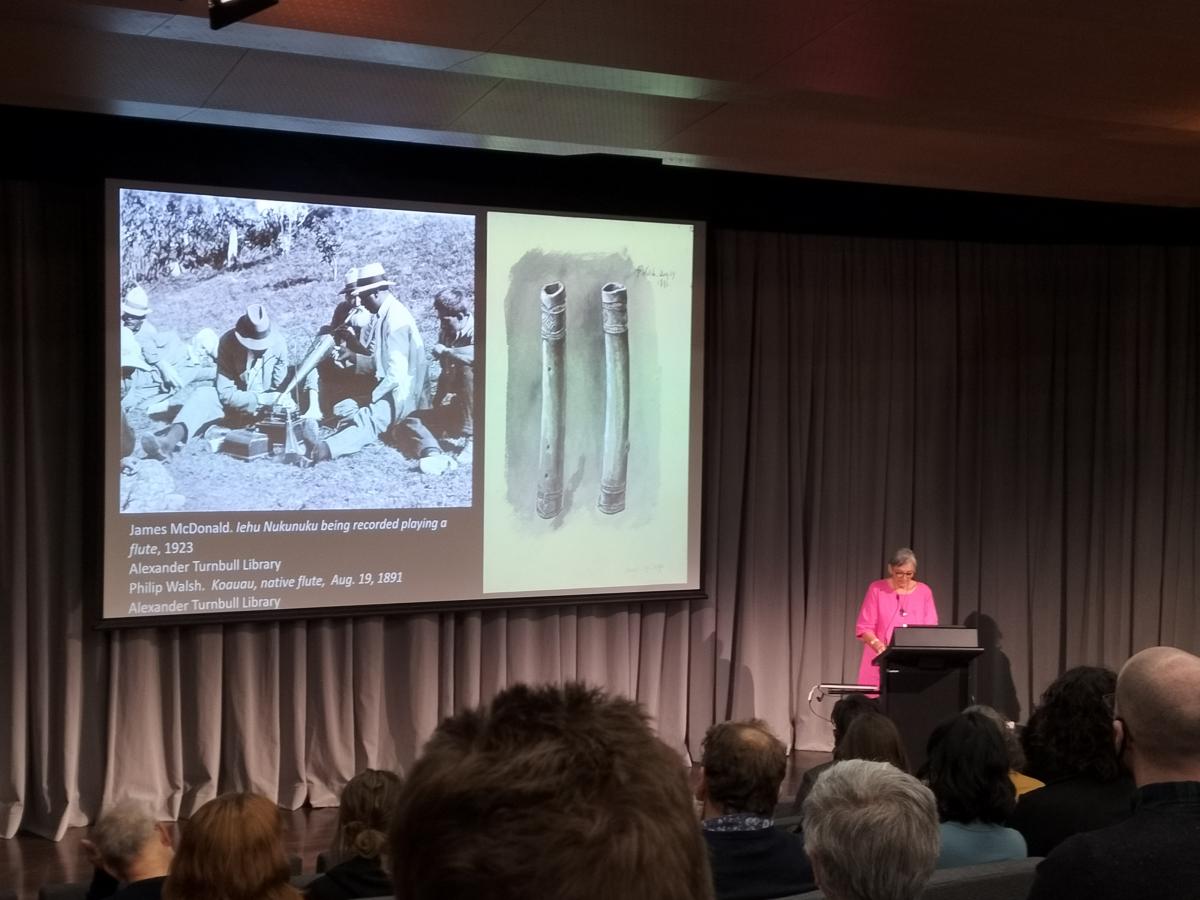Forbes Prize Lecture
Submitted by sharragrow on 05 Sep 2022

Sam Finch and Lucilla Ronai
Monday, Forbes Prize Lecture – Vicki-Anne Heikell
On the first day of the IIC Congress, we were treated to a lecture from this year’s Forbes Prize winner Vicki-Anne Heikell. The Forbes Prize is awarded to someone who has made an outstanding contribution to the field, something that Vicki-Anne Heikell is more than worthy of. Her career as a paper conservator has seen her working at such institutions as Te Papa Tongarewa Museum of New Zealand, the Alexander Turnbull Library, and the National Library of New Zealand, which is currently home to an incredible exhibition she helped to put together. The He Tohu exhibition showcases the three foundational documents of Aotearoa New Zealand: The Declaration of Independence 1835, Te Tiriti o Waitangi (The Treaty of Waitangi) 1840, and the Womens Suffrage Petition 1893.

After introducing herself in the traditional pepeha, her talk entitled ‘Having Faith in Ourselves’ opened with poem. This is a mihi, an acknowledgement, to the women who have been before her, who recognised that conservation was important and that Māori women have something to offer. This is a theme that she drew on throughout her talk. She asked us what role we as conservators have in supporting communities, sharing and reviving knowledge and reminded us that cultural value does not come from an object’s mere existence, but comes from the object’s creation and use. She asked us to challenge how we see conservation and our roles. Something we should reflect upon during this congress. Vicki-Anne also introduced audience to the concept of āta and how we can utilise it as a guide of what we do and how we do it. Her talk was moving and maked me reflect on how I approach conservation and my, admittedly small, role in this field.
Vicki-Anne was not alone in this session, and she called upon two other women to present short talks with her. The first is Dr Rangi Te Kanawa, a conservator of textiles and traditional weaver. After her pepeha, Dr Te Kanawa regaled us with the story of Māori creation. Her talk discussed Māori weaving, from its resurgence to the traditional methods. She told us about the Ministry of Cultural Heritage’s mandates on the treatment of taonga (treasures) and presents some of the difficulties in caring for woven objects such as cleaning. Perhaps the biggest takeaway for me was in the later part of her talk when she discussed the lack of successors to this current generation of Māori conservators and the lack of Pacific conservators in Aotearoa. There is a great cultural value in supporting local practitioners, she told us, and in order to recapture and respect the traditional knowledge we must all work together.

The final of our three speakers was Puawai Cairns from Te Papa Tongarewa Museum of New Zealand. She was not able to attend in person and so a pre-recorded talk was played. After her pepeha, Puawai began with a controversial topic: Kim Kardashian and Marilyn Monroe’s dress. When Kim Kardashian wore the dress at the Met Gala there was a great backlash across the world. Amongst this was a statement from ICOM’s Costume Committee who believed that no historic textiles should be worn and that items such as the dress in question should be kept for future generations. Puawai pointed out how limited this view is especially in regard to living cultures’ material, and she responded publicly online to this statement. She discussed with us her experience criticising ICOM’s online reaction, pointing out the difference between how her response was treated and how others’ were treated. It is interesting to reflect on her talk, as I remember the media coverage of her critique of ICOM’s statement, and without context it didn’t make a lot of sense to me. But after hearing her explanation on the need to expand our idea of how living cultural objects are used, especially by communities, she completely changed my mind.
The session ended with a waiata, song–a beautiful way to conclude a truly moving group of talks from three inspirational wahine toa.
Authors
Sam Finch is an Honours Student at the University of Otago
Lucilla Ronai is the Coordinator, Conservation for Digitisation at the National Library of Australia in Canberra.
Image Captions
1. IIC President Julian Bickersteth introduces our Forbes Prize winner Vicki-Anne Heikell. Image taken by Sam Finch.
2. Vicki-Anne Heikell presents a fascinating talk. Image taken by Sam Finch.